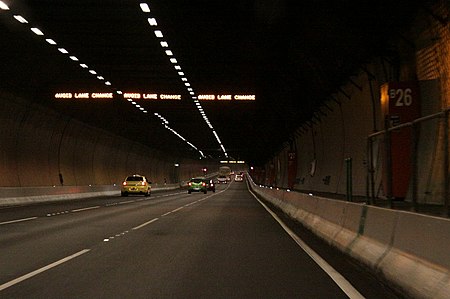Burnley Tunnel
2000 establishments in AustraliaBuildings and structures in MelbourneCrossings of the Yarra RiverToll roads in AustraliaToll tunnels in Australia ... and 4 more
Transport in MelbourneTunnels completed in 2000Tunnels in Victoria (Australia)Use Australian English from March 2018

The Burnley Tunnel is a tollway tunnel in Melbourne, in Victoria, Australia, which carries traffic eastbound from the West Gate Freeway to the Monash Freeway. It is part of the CityLink Tollway operated by Transurban. Running under the Yarra River and the inner suburbs of Richmond and Burnley, the tunnel provides a bypass of the central business district.
Excerpt from the Wikipedia article Burnley Tunnel (License: CC BY-SA 3.0, Authors, Images).Burnley Tunnel
Olympic Boulevard, Melbourne Melbourne
Geographical coordinates (GPS) Address Website Nearby Places Show on map
Geographical coordinates (GPS)
| Latitude | Longitude |
|---|---|
| N -37.824444444444 ° | E 144.98416666667 ° |
Address
AAMI Park (Melbourne Rectangular Stadium)
Olympic Boulevard
3000 Melbourne, Melbourne
Victoria, Australia
Open on Google Maps








